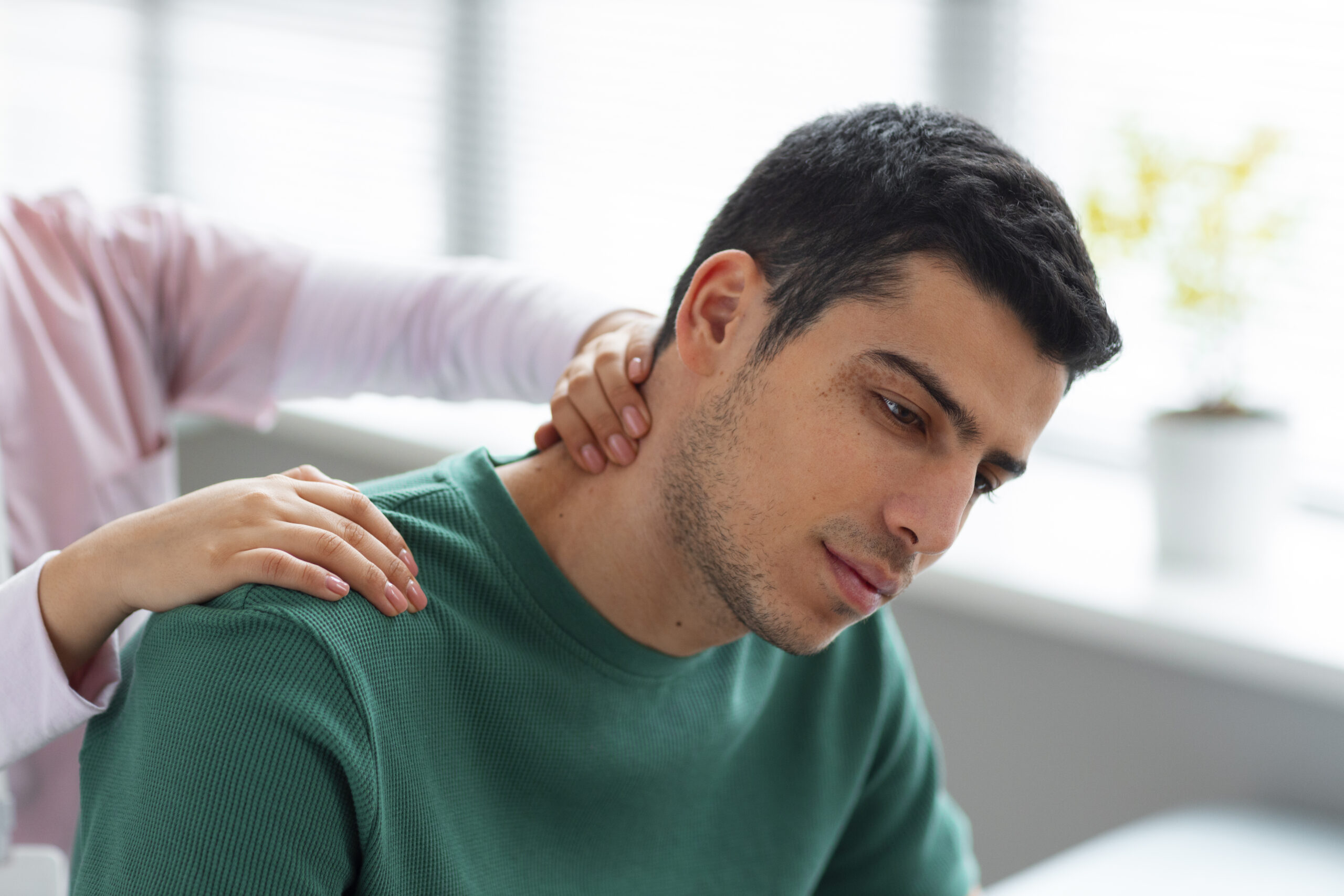In the vast world of musculoskeletal disorders, some conditions remain hidden in the shadows. One such condition is Inomyalgia. While many people are familiar with fibromyalgia or chronic fatigue syndrome, Inomyalgia often goes unnoticed and under-discussed. This lesser-known disorder can significantly impact daily life for those who experience it.
What exactly is Inomyalgia? What symptoms should you be aware of? And more importantly, how can individuals living with this condition navigate their day-to-day experiences? Join us as we delve into the intricacies of Inomyalgia—its causes, treatments, coping strategies, and personal stories that shed light on what it’s like to live with this unique challenge.
Definition of Inomyalgia
Inomyalgia is a chronic musculoskeletal disorder characterized by widespread pain and tenderness in the muscles, ligaments, and tendons. It shares similarities with other pain conditions but has distinct features that set it apart.
This condition can affect any part of the body, leading to discomfort that may feel like an ache or throbbing sensation. Unlike typical muscle soreness from exercise, Inomyalgia often persists without a clear cause.
People with Inomyalgia may experience heightened sensitivity to touch or pressure. This hyper-sensitivity can make everyday activities challenging and uncomfortable.
While research into this condition is ongoing, understanding its definition is crucial for recognizing symptoms early on. Awareness can lead to better management strategies and improve quality of life for those affected by Inomyalgia.
Symptoms of Inomyalgia
Inomyalgia can present a variety of symptoms that may differ from person to person. One common sign is persistent muscle pain, often affecting the back, neck, and limbs. This discomfort may feel like an unrelenting ache or sharp sensations.
Fatigue is another hallmark symptom. Many individuals report feeling drained despite adequate rest. This overwhelming tiredness can hinder daily activities and reduce overall quality of life.
Joint stiffness often accompanies the muscle pain as well. Mornings might be particularly challenging when getting out of bed feels like an arduous task.
Some people experience sleep disturbances too. Insomnia or restless nights contribute to feelings of exhaustion during the day.
Cognitive difficulties, sometimes referred to as “fibro fog,” can also occur. Individuals may struggle with memory issues or concentration challenges amidst their physical symptoms.
Causes and Risk Factors
The exact causes of Inomyalgia are still not entirely understood. However, researchers have identified several potential triggers that may contribute to its onset.
Genetic predisposition plays a crucial role. Individuals with a family history of musculoskeletal disorders might be at higher risk.
Environmental factors can also affect the likelihood of developing Inomyalgia. Stressful life events or chronic stress might trigger symptoms in susceptible individuals.
Hormonal changes are another area of interest. Fluctuations in hormones, particularly around menopause, could influence pain perception and muscle function.
Certain lifestyle choices like sedentary behavior or poor diet may exacerbate symptoms too. These habits can lead to muscle weakness and increased discomfort over time.
Age is an unavoidable factor as well; older adults tend to experience more musculoskeletal issues due to natural wear and tear on their bodies along with possible coexisting health conditions.
Diagnosis and Treatment Options
Diagnosing inomyalgia can be challenging due to its similarity to other musculoskeletal disorders. A thorough medical history and physical examination are essential first steps. Doctors may also recommend blood tests or imaging studies to rule out other conditions.
Once diagnosed, treatment options vary based on individual needs. Pain management often includes over-the-counter medications or prescribed analgesics. Physical therapy plays a vital role in improving mobility and strength.
Alternative treatments such as acupuncture and massage therapy can provide relief for some patients. Lifestyle changes, including gentle exercise and stress-reduction techniques, are also beneficial.
For those with severe symptoms, more advanced interventions like corticosteroid injections might be considered. Regular follow-ups with healthcare professionals ensure that the treatment plan is effective and adjusted as needed.
Coping with Inomyalgia: Tips and Strategies
Coping with Inomyalgia can be challenging, but there are effective strategies to help manage symptoms. Start by establishing a routine that includes gentle exercises. Stretching and low-impact activities like yoga or swimming can enhance flexibility and reduce pain.
Mindfulness practices also play an essential role. Techniques such as meditation or deep-breathing exercises promote relaxation and may alleviate stress, which often exacerbates discomfort.
Consider keeping a symptom diary to track triggers and patterns. This can provide insights into what worsens your condition, helping you make informed lifestyle changes.
Nutrition is another important factor. A balanced diet rich in anti-inflammatory foods may support overall health and potentially ease symptoms.
Don’t hesitate to seek support from friends, family, or online communities. Sharing experiences with others who understand can offer comfort and practical advice tailored for living well with Inomyalgia.
Living with Inomyalgia: Personal Stories
Living with inomyalgia can feel isolating. Many individuals share their personal journeys, illustrating the challenges they face daily.
One woman described how simple tasks, like picking up her child or carrying groceries, became monumental hurdles. She learned to pace herself and rely on support from friends and family.
A young man spoke about his struggle to maintain a social life while dealing with unpredictable flare-ups. He found solace in online communities where members openly share experiences and tips for coping.
Another individual shared her journey of self-discovery through yoga and mindfulness practices. These tools helped her cultivate resilience amid pain.
These stories reflect a common thread: despite the difficulties posed by inomyalgia, many people are finding ways to adapt and thrive. Each tale highlights strength, creativity, and hope as essential elements of living with this lesser-known disorder.
Research and Advancements in Treating Inomyalgia
Recent research into inomyalgia is opening new doors for diagnosis and treatment. Scientists are delving deep into the underlying mechanisms of this condition, providing insights that were previously elusive.
One promising area of study involves the role of inflammation in muscle tissues. Some researchers are exploring how anti-inflammatory medications may alleviate symptoms for those suffering from inomyalgia.
Additionally, advancements in physical therapy techniques have shown potential. Tailored exercise regimens can help improve mobility and reduce pain levels effectively.
Moreover, alternative therapies like acupuncture are gaining attention. Early studies suggest they might offer relief by targeting specific pressure points related to muscular discomfort.
As research progresses, we’re likely to see more personalized approaches emerge, ensuring better outcomes for individuals living with this challenging disorder. The future looks brighter as awareness grows within the medical community about the complexities surrounding inomyalgia.
Conclusion
Understanding Inomyalgia is crucial for those affected by this lesser-known musculoskeletal disorder. As awareness grows, so does the potential for improved diagnosis and treatment options.
Recognizing symptoms early can lead to better management of the condition, enabling individuals to regain a sense of control over their lives. With ongoing research and advancements in medical treatments, there’s hope on the horizon.
Sharing personal stories not only fosters community but also provides invaluable insights into coping strategies that work. It reminds us that while challenges exist, support and understanding are vital components of navigating life with Inomyalgia.
By staying informed about new developments in treatment and actively seeking support networks, individuals living with Inomyalgia can look forward to a future filled with possibilities rather than limitations. Keeping the conversation going is important as it brings visibility to this often-overlooked condition and encourages a more profound understanding within society as a whole.

